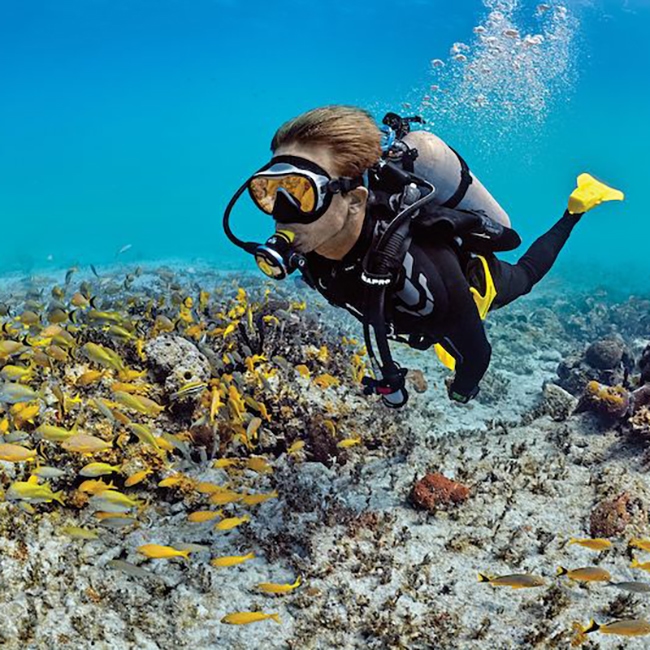Scuba diving is an exciting and fascinating activity that lets you explore the underwater world. It allows you to experience a sense of weightlessness, observe marine life up close, and enjoy the feeling of being in a different world. While scuba diving is a thrilling activity, it also involves certain risks that can be minimized through proper training and understanding of the physiology and physics of diving. In this article, we will explore the science of scuba diving and how it affects the human body.
The Physiology of Scuba Diving
When you dive underwater, your body experiences a variety of physiological changes that can affect your comfort and safety. The most significant changes occur due to the increased pressure of water on your body. As you descend deeper into the water, the pressure around your body increases, which affects your body in several ways.

The first change you will notice is the compression of air spaces in your body, such as your lungs, ears, and sinuses. As the pressure increases, the air in these spaces compresses, causing discomfort or pain. To prevent this, you need to equalize the pressure in these spaces regularly by clearing your ears and sinuses and breathing out through your nose while descending.
Another significant physiological change is the increased workload on your cardiovascular system. When you dive, your body must pump blood to your muscles and organs while also supplying oxygen to your brain. The increased pressure of water on your body causes your heart to work harder to pump blood, which can lead to an increased heart rate and a higher risk of decompression sickness.
Decompression sickness occurs when nitrogen gas, which is breathed in as part of compressed air, forms bubbles in the body’s tissues and bloodstream as a diver ascends to the surface too quickly. To prevent this, divers must follow safe ascent rates and make decompression stops to allow the excess nitrogen to escape safely.
The Physics of Scuba Diving
Scuba diving also involves the physics of buoyancy and pressure. Understanding these concepts is crucial to control your movement underwater and conserve your energy.
Buoyancy is the force that causes objects to float or sink in water. As a scuba diver, you have a buoyancy compensator device (BCD) that allows you to adjust your buoyancy by inflating or deflating the device. By controlling your buoyancy, you can control your depth and movement underwater.
Pressure is another crucial concept in scuba diving. The pressure at depth increases, and the volume of air in your equipment decreases, which affects your breathing. As a result, you need to manage your air consumption to ensure that you have enough air to complete your dive safely.
The physics of scuba diving also includes the effects of light and color. As you dive deeper, the amount of light decreases, and the colors become less vibrant. Understanding how to use underwater lights and filters can enhance your experience by bringing back the colors and making your photos and videos more visually appealing.
Safety in Scuba Diving
Scuba diving involves certain risks, such as decompression sickness, nitrogen narcosis, and oxygen toxicity. To minimize these risks, you must follow safe diving practices, including proper training, careful planning, and adherence to the rules of diving.
Proper training is essential for scuba diving. You must obtain a certification from a recognized scuba diving agency, such as PADI or SSI, that teaches you the necessary skills and knowledge to dive safely. You must also practice regularly and continue to improve your skills to become a better and safer diver.



